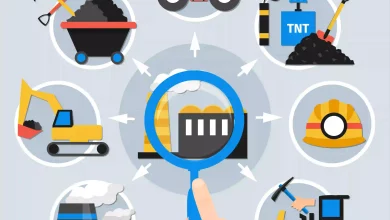Safety and Competence of Firefighting Apparatus in Mines

Australian mines are rich in natural resources and vary widely regarding mode of operation. However, all mines have something in common – the deployment of mission-critical equipment. These tools are used round the clock under hostile environmental conditions to make work easier for us.
Most of the time, these mission-critical tools are housed deep underground inside the mine in limited access areas, which makes the threat of accidental fire incredibly serious and requires the highest level of protection in Firefighting.
Fire accidents in mines cost human lives and hamper production and profits. This is why it is vital to entrust the installation of proper fire suppression equipment to a certified fire protection Guide in a mine site.
What Can You Use to Prevent Accidents?
The risk of mining-site fires is not limited to tunnels and underground areas. While the threat of a fire is slightly increased underground, fire can ignite in and around workshops, mobile plants, control rooms, conveyor belts, switch rooms, draglines, and substations.
Many mine sites use gaseous and non-gaseous fire suppression systems in and around the plant to protect expensive equipment. A certified fire protection specialist decides where to install what kind of fire suppressant system to safeguard lives and ensure the work goes on without a hitch.
Installing Appropriate Firefighting Apparatus in Mines
A high-quality fire suppression system has three job roles:
- Proper fire detection
- Efficiently releasing the suppressant to control or extinguish the fire
- Handling the type and size of fire effectively
There are two types of fire suppression systems commonly used in mine sites. They are,
- Non-gaseous systems
- Gaseous systems
Non-gaseous fire extinguishing systems include foam deluge systems, water mist systems, and dry chemical systems. These extinguishing agents do not fall under the Ozone Protection and Synthetic Greenhouse Gas Management Act 1989 (the Act) and are used to suppress fire in mobile plants.
As the name suggests, a gaseous fire suppression system uses an extinguishing agent in its gaseous form to put out the fire. This system also includes fire detection and control systems enabling the automatic discharge of water-vapour suppressants in case of a fire hazard.
Let’s discuss the efficacy of each of these systems individually to understand their function and safety standards for use in mine sites.
Non-Gaseous Firefighting Apparatus in Mines
As stated before, a fire suppression system is installed to detect, control, and douse fires in mines or other commercial sites. Here are the commonly used equipment used in mine sites to prevent fire hazards Firefighting.
- Dry Chemical Fire Suppressant System: This system releases a dry chemical in powder form to put out the fire. This system covers large areas that are not easily accessible to traditional fire extinguishing systems. Mine sites with various obstacles on the way are perfect for this fire suppression system.
- Foam Suppressants: There are specific fire hazards where using chemicals or water can prove to be disastrous. In such cases, certified fire protection specialists use an eco-friendly foam deluge system to put out the fire. The foam mixed with water makes a blanket cover to hold back the fire or extinguish it.
- Water Mist Fire Suppression: An upgraded version of the traditional sprinkler system, the water mist system releases ultra-fine water droplets to contain the fire. This system is primarily used in enclosed areas to check Class C gas fires. It can also protect oil-filled high voltage transformers from fire hazards.
Gaseous Firefighting Apparatus in Mines
Fire hazards can also take place in areas other than the underground tunnels in a mine. It can take place in storage houses or switch rooms. Gaseous fire systems protect the delicate and expensive electrical equipment in such cases. Moreover, gaseous extinguishing agents are clean, i.e. they do not leave any residue after discharge Firefighting.
Gaseous firefighting systems reduce the oxygen level in the area to break the combustion chain reaction and contain the fire. Early fire detection systems also fall under this category as they allow automatic controlled release of the suppressant in case of a fire hazard by Firefighting.
How Safe are These Firefight Systems for Mine Sites?
The safety and efficacy of these systems depend upon the manufacturer and the fire protection specialist you are using to get the systems in place. Mine sites are always at risk of fire hazards that can turn destructive if not contained or extinguished.
Investing in proper firefighting systems is only half the job done. Ensure that they are of good build quality and meet the codes and standards set by the government. Furthermore, you must maintain all the systems in top condition to ensure they work properly during an emergency. Only licensed professionals must install and maintain these fire suppression and extinguish systems for optimum safety and efficacy.
In Conclusion:
Fire hazards are unpredictable, but you can prevent them with proper firefighting apparatuses. Investing in high-quality equipment and working with a certified fire protection specialist will help create a safe workplace for your employees.






